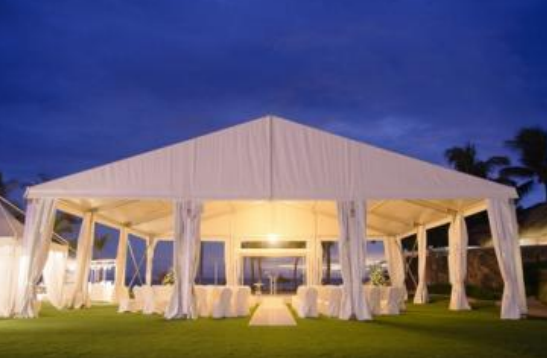Aluminum alloy tents are widely used for outdoor events like weddings, exhibitions, and disaster relief due to their durability and easy assembly. Follow these clear steps to ensure a safe and efficient installation process.
First, inspect the installation site. Choose a flat, solid ground and remove any debris, rocks, or sharp objects that could damage the tent or cause instability. Then, check all components: confirm you have aluminum alloy frames (poles, connectors), tent fabric, ground anchors, and tools (wrenches, hammers) as listed in the manual. Finally, assign roles to the installation team to avoid confusion—at least 2-3 people are recommended for small to medium-sized tents.
Start with the base frame. Connect the horizontal aluminum poles using the provided connectors; ensure each joint is tightened with a wrench to prevent looseness. Next, install the vertical support poles: align them with the base frame’s connection points and secure them firmly. For larger tents, add diagonal bracing poles to enhance stability—these cross between vertical poles and base frames to distribute weight evenly.
Once the frame is assembled, anchor it to the ground immediately to avoid tipping. Use ground anchors (such as steel pegs or expansion bolts) at each corner of the frame. Hammer pegs 30-50 cm deep into the soil, or drill expansion bolts into concrete surfaces. Pull the frame slightly to test if it’s stable—adjust anchors if there’s any movement.
Lift the tent fabric (ensure it’s clean and dry) and drape it over the aluminum frame. Start from the top of the frame and pull the fabric down evenly on all sides. Secure the fabric to the frame using the built-in straps or buckles: fasten each strap tightly to avoid gaps that could let in wind or rain. For extra protection, seal the edges of the fabric with waterproof tape if the tent will be used in wet weather.
After installation, check every part thoroughly. Verify that all frame joints are tight, ground anchors are secure, and the fabric is properly fixed. Test the tent’s stability by gently pushing the vertical poles—there should be no significant swaying. If needed, adjust the fabric tension to prevent sagging, especially before rainy or windy weather.
By following these steps, you can safely and effectively install an aluminum alloy tent, ensuring it provides reliable shelter for your outdoor event.


Hi! Welcome back.
How are you doing?

+86 17712768856
NO.1319-1 Xicheng Rood Qingyang village, Jiangyin City,Jiangsu Province,China
Subscribe today and get educated and entertained with the monthly SYXTENT email